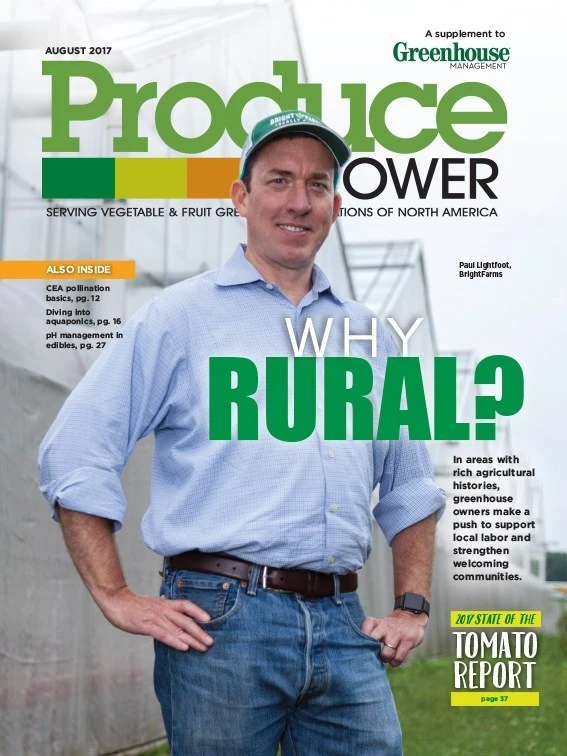
While much of the population is moving into urban centers, many greenhouse growers are finding great advantages in moving to more rural areas. They’re moving to towns with agricultural, but perhaps not horticultural, histories, ripe with potential. The land is typically less expensive, and there’s more space available than in cities, while at the same time, the growers are still relatively close to urban markets. These growers aim to increase employment opportunities for local communities, and also develop a source of fresh, local, sustainable produce for the surrounding area.
This month, we take a look at BrightFarms, an experienced grower that has both rural and urban locations, and Kentucky Fresh Harvest and AppHarvest, two growers with plans to build greenhouses in rural Kentucky. Read their stories, starting here.

If you’re looking to improve your pollination practices, don’t miss Christopher Currey’s Hydroponic Production Primer, where he explains the best methods for each crop. To learn more about non-chemical pest control and pH management in edibles, read here and here.
We’re also excited to bring you the third annual State of the Tomato Report. This year, the focus has been on flavor. Growers reported being most interested in producing the best-tasting tomatoes, although yield was the second most important quality to them. Our updated research results start here.
Also in this section, Houweling's Tomatoes shares how sustainability guides the way that they run their business, and Celina Gómez of the University of Florida shares her best practices for producing and maintaining greenhouse tomato crops here. Lastly, don’t miss Leslie Halleck’s tomato trends-themed Edible Insights column, details from the Vineland Research and Innovation Centre’s recent breeding and consumer research efforts, and the latest tomato varieties.

kvarga@gie.net | (216) 393-0290
Twitter: @Karen_GIE

Explore the August 2017 Issue
Check out more from this issue and find your next story to read.
Latest from Produce Grower
- The Growth Industry Episode 3: Across the Pond with Neville Stein
- PG CEA HERB Part 2: Analyzing basil nutrient disorders
- University of Evansville launches 'We Grow Aces!' to tackle food insecurity with anu, eko Solutions
- LettUs Grow, KG Systems partner on Advanced Aeroponics technology
- Find out what's in FMI's Power of Produce 2025 report
- The Growth Industry Episode 2: Emily Showalter on how Willoway Nurseries transformed its business
- 80 Acres Farms expands to Georgia, Texas and Colorado
- How BrightFarms quadrupled capacity in six months





